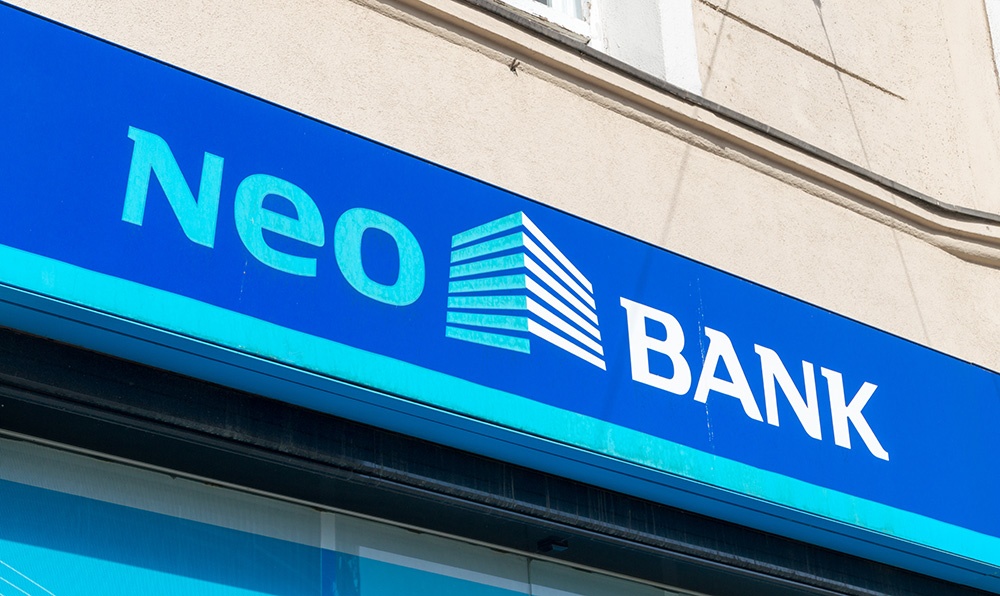Neobanking: a trend-setting model for the digital revolution
In the banking sector, digital transformation means transforming services into an internet-based environment. It entails service enhancement, process automation, improved customer experience, and data integration. As a result, the bank can reduce face-to-face interactions while providing customers with comprehensive digital services.
 |
| Le Khanh Lam-Chairman, RSM Vietnam |
Banks must embrace digital transformation to keep up with market trends, improve customer experience, and meet customers’ increasingly high and complex needs and requirements. Modern customers, for example, anticipate a bank’s mobile application to offer a variety of features such as bill payment, shopping, savings, and investment, rather than just simple money transfer or balance checking.
Vietnam’s population is estimated to be over 98.5 million, with 72.8 per cent in adulthood and around the same figure using the internet, according to a Digital 2022 report from WeAreSocial. Furthermore, 36.5 per cent of survey respondents frequently use the internet for financial management, and 27 per cent use websites and banking applications on a monthly basis. The figures above indicate many potential customers for Vietnamese banks’ digital transformation.
Recognising such a potential, the government has also emphasised the importance of boosting the digital economy, and digital transformation in the finance-banking sector, in particular, in the National Digital Transformation Programme. To be able to deploy evenly throughout the banking system, the State Bank of Vietnam (SBV) has issued and guided the implementation of projects, programmes and plans to promote digitalisation in the banking and credit institutional system.
Banking app boom
Vietnam’s commercial banking system has made significant progress towards digital transformation in recent years. According to the SBV, 95 per cent of commercial banks planned or were planning to build a digital transformation strategy in September 2020, with 42 per cent building a digital transformation strategy and 39 per cent having an approved business development and IT strategy.
Currently, most commercial banks in Vietnam have launched mobile applications with a variety of features and utilities in line with the size and resources of each bank. It can be said that customers have generally reacted favourably to banking apps. The outbreak of COVID-19, in particular, is regarded as a boost to the non-cash payment behaviour, from which digital banks have grown rapidly in terms of transaction quantity and value.
According to data from the Payment Department of the SBV, electronic payment services are progressing at a remarkably fast pace in banking digital transformation activities. In the first half of 2022, compared to the same period in 2021, the quantity and value of payment transactions made over the internet increased by 63.2 per cent and 32.3 per cent respectively, as well as those made over mobile phones by 98.3 per cent and 84.3 per cent, respectively.
However, most online banking apps on the market serve only as a bank extension feature. For some loan origination features, for instance, customers must still visit transaction offices in person. Furthermore, when it comes to connecting with other platforms, these applications fall short of e-wallets or fintech solutions.
Under the pressure of increasingly fierce fintech competition, neobank (digital banking), while having only been around for a decade, is becoming increasingly popular throughout the world and is seen as a very feasible business model for commercial banks in the Vietnam market when executing a digital transformation strategy.
Because there are no physical branches or transaction offices, neobank is classified as a fully internet-based bank. Digital banking leverages technology and AI to provide highly personalised services to customers, such as loans, investments, or credit cards.
It is believed that the standout characteristic of neobank is the entire digital experience of customers when purchasing the services. Neobank’s only means of communication are the internet channel or a mobile phone app. The internet-only banking model is customer-centric with low costs by taking advantage of digital technology without the need for extensive human resources and expensive physical operational facilities.
The neobank model can be established by a traditional bank or from a partnership between a bank and a fintech organisation. As of now, Vietnam does not have a separate licence for digital banks. Therefore, neobanks must function under the business licence of the parent bank.
However, traditional banks and neobanks do not have disputes and conflicts. On the contrary, they may continue to develop concurrently, bringing their own brands, positioning themselves in different customer segments, and serving diverse customer needs.
 |
| Neobanking: a trend-setting model for the digital revolution, photo: Shutterstock |
Establishing a neobank
There are certain advantages to neobanks founded by traditional banks. The new business model enables the bank to implement strategies such as attracting new customers, raising capital, and selling more or cross-selling services of the parent bank.
Digital banks belonging to traditional banks have a solid financial foundation when it comes to saving operating costs. Because while they function pretty independently, they are nonetheless subject to the rigorous management of the parent bank to comply with the regulations of the SBV.
On the other hand, when setting a neobank as a subsidiary or a department, traditional banks confront hurdles in terms of the costs of establishing new models, robust technological platforms, and training new skills for their employees. One of the solutions which are worthy of consideration by commercial banks is cooperating with a fintech business to establish a neobank.
Thanks to this cooperation, both parties can concurrently maximise the development of their own capabilities. Fintech businesses offer technological advantages and front-end operational experience in digital-based financial services. Meanwhile, traditional banks with substantial banking expertise and experience will serve as the pillars of the back end.
As a result, the digital banking business will operate efficiently, fulfilling the requirements of its customers while the financial pressure to convert is not too high.
However, the dilemma of boosting digital transformation in the banking sector, and the development of a neobank model in particular, is not only a matter of investment in transformation but also of the fact that the existing legislative framework is still not up to date to the growth of technological advancement. The pace of technological innovation is currently tremendously fast. It is changing and improving every day, but legal principles have not kept up.
Aside from not issuing an independent business licence to digital banks, the SBV has yet to release specific regulations on digital products and services. Also, the regulatory regime is insufficiently stringent in protecting customers.
The SBV must work with relevant ministries and sectors to continue researching, reviewing, amending, and supplementing the appropriate contents that must be legislated, especially those related to technology implementation and information security. Simultaneously, a comprehensive legal corridor for the ecosystem that includes authorities, banks, customers, and relevant third parties is also required.
Implementing digital transformation is no longer the choice of commercial banks but an inevitable step for the Vietnamese banking system to improve service quality, competitiveness, and market expansion. Neobank, in particular, is a global trend and is seen as a viable model for the present Vietnamese market.
Despite opening up many opportunities, the banking business is facing numerous challenges. To solve these problems, the SBV, commercial banks, and fintech companies need to quickly grasp the development trend and coordinate in order to come up with practical solutions soon.
 | RSM Vietnam taking advantage of central region recovery to expand operations As Vietnam is among the top choices for global investors, RSM Vietnam continues to increase its operations to support the expansion efforts of foreign groups. |
 | RSM Vietnam celebrates opening new office in Ho Chi Minh City On September 14, RSM Vietnam officially held the opening ceremony of a third office in Ho Chi Minh City at the AP Tower on Dien Bien Phu street, Ward 21, Binh Thanh district. |
 | Evaluating the prospects of M&A upswings next year Recent global geopolitical happenings and macroeconomic factors have caused the domestic M&A market to experience a downturn. Le Khanh Lam, chairman of RSM Vietnam, talked to VIR’s Linh Le about current market trends and projections for the near future. |
What the stars mean:
★ Poor ★ ★ Promising ★★★ Good ★★★★ Very good ★★★★★ Exceptional
Related Contents
Latest News
More News
- Implementation of the circular economy in Vietnam (November 13, 2023 | 11:30)
- Banking’s development in data and digitalisation era (November 07, 2023 | 15:24)
- ESG enabling real estate businesses to attain funds (June 16, 2023 | 15:25)
- RSM Vietnam stays ahead of the changing business environment (March 14, 2023 | 10:07)
- What might the Vietnamese economy look like in 2023? (January 02, 2023 | 21:37)
- Evaluating the prospects of M&A upswings next year (November 28, 2022 | 08:00)
- RSM Vietnam celebrates opening new office in Ho Chi Minh City (September 20, 2022 | 19:29)
- RSM Vietnam taking advantage of central region recovery to expand operations (September 19, 2022 | 08:00)
- Firm grasp of rules crucial in handling customer info (August 29, 2022 | 08:00)
- RSM Vietnam continues to transform to realise its vision (July 14, 2022 | 18:17)

 Tag:
Tag:





















 Mobile Version
Mobile Version